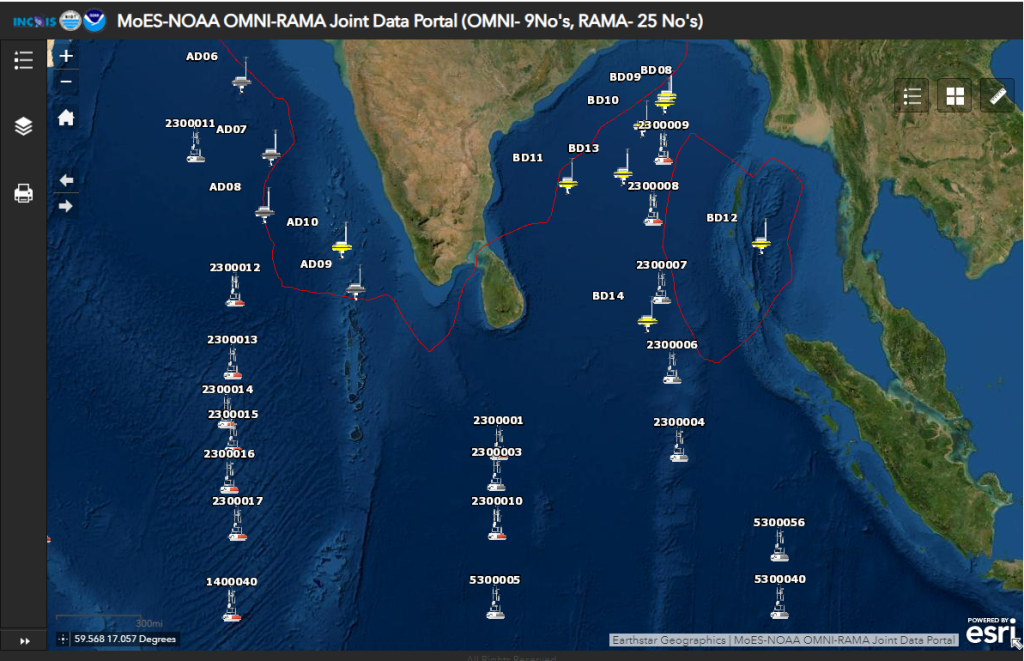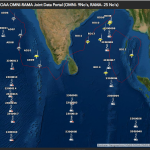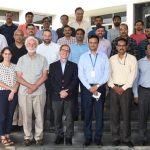GOMO Helps Launch Ocean Observing in the Arabian Sea
 Every day, thousands of ocean observations are collected in the Indian Ocean from massive moored buoys, beach ball-sized drifters, robotic floats, and other instruments in the water. The data collected by these observing instruments helps scientists improve predictions of monsoons in India and weather and climate patterns that affect the United States. Building on the success of this observing program, NOAA is now expanding ocean observations into the Arabian Sea.
Every day, thousands of ocean observations are collected in the Indian Ocean from massive moored buoys, beach ball-sized drifters, robotic floats, and other instruments in the water. The data collected by these observing instruments helps scientists improve predictions of monsoons in India and weather and climate patterns that affect the United States. Building on the success of this observing program, NOAA is now expanding ocean observations into the Arabian Sea.
Through the Global Ocean Monitoring and Observing Program (GOMO), NOAA has maintained a decade-long partnership with India’s Ministry of Earth Sciences (MoES) in the name of ocean and atmospheric observations for improved weather and climate prediction. In 2021, the partners launched a new joint oceanographic data portal that makes data from the RAMA-OMNI moored buoy array in the Indian Ocean publicly available for the benefit of global science, forecasting, and disaster preparedness. Expanding into the Arabian Sea is part of the Enhancing Knowledge of the Arabian Sea Marine Environment through Science and Advanced Technology Program, or EKAMSAT, which has been in the works since 2021. GOMO Program Manager Dr. Sid Thurston visited India in August 2022 to help develop a plan to launch EKAMSAT.
Thurston participated in a programmatic meeting in New Delhi with Secretary Dr. M. Ravichandran, India’s Ministry of Earth Sciences, and the U.S. Navy Office of Naval Research (ONR)’s Dr. Emily Shroyer. The remainder of the meetings were held in Hyderabad at India’s National Center for Ocean Information Services (INCOIS). These discussions focused on finalizing a science plan and included participation from prominent scientists Dr. Mike McPhaden (NOAA/PMEL), Dr. Craig Lee (University of Washington), and Dr. Tom Farrar (Woods Hole Oceanographic Institute).
Looking forward, the three partners agreed on a plan to expand ocean observations into the Arabian Sea beginning in 2023. ONR, which has funded research in the Bay of Bengal, will be funding UNOLS ships in the Arabian Sea and the work of U.S. scientists interested in the Indian Ocean. NOAA GOMO will contribute with RAMA moorings (three mooring have been in the Arabian Sea since 2018), drifting buoys from the Global Drifter Program, and other in situ ocean observations. India will be providing ship time to service moorings, deploy expendables and fund Indian research scientists. In addition to this coordinated expansion of ocean observations, the partners will work to get the existing RAMA array back to 70% data reporting by the end of 2023, which was devastated by the halt in servicing due to the COVID pandemic.


